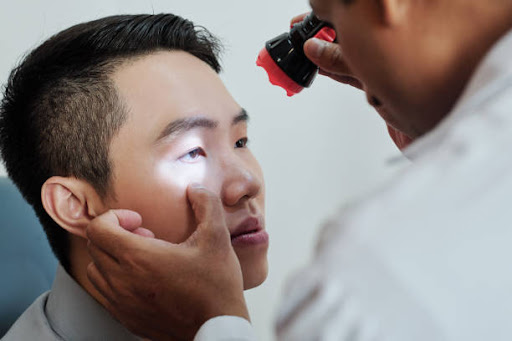Symptoms of Retinitis Pigmentosa
There are two types of cells that gather light in the retina; rods and cones. Rods are situated around the outer ring of the retina and are active in dim light. Cones, on the other hand, are situated at the centre of the retina and help detect colour and fine detail.
Because both cell types are affected, there are a number of symptoms linked with RP. Among them are:
-
Night blindness – In most cases, early symptoms will include difficulty seeing at night and loss of peripheral vision. Rods are more severely affected by cones. A person will first begin to notice that it takes much longer for the eyes to adjust to dark spaces, such as walking from a brightly lit room to a room with limited lighting.
-
Tunnel vision – The loss of rods slowly leads to the loss of cones and causes people to lose their visual field. A person may start bumping into objects as they are not able to see items that are below or around them without turning their head.
-
Loss of central vision and colour blindness – In the later stages, people will find it difficult to perform tasks as they have limited vision and are unable to distinguish colours.
-
Photophobia and photopsia – Some people may start to find bright lights uncomfortable or see flashes of light that shimmer and blink.
Diagnosing Retinitis Pigmentosa
At Eyecentric, we take great care into diagnosing and treating all eye disorder cases. Our top ophthalmologists will conduct multiple tests to accurately diagnose your disorder.
-
Ophthalmoscope – An ophthalmologist will put eye drops into your eyes and use a handheld tool to look for unnatural dark spots on your retina
-
Visual field test – Patients will have to look through a special machine that displays a moving dot of light. Under the guidance of the clinician, the field test will help measure your side vision and find any blind spots that are developing.
-
Genetic testing – Our eye doctors may take a DNA test for a genetic diagnosis. This helps in understanding the progression of the particular form of the disorder, the severity of the disease and to determine if gene therapy is helpful.
-
Electroretinography/electroretinogram – This test will measure the electrical activity in the retina and how capable the retina is able to respond to light.
-
Eye ultrasound – high-frequency sound waves is used to produce detailed images of your eye, allowing our SJMC EYERIS specialist to examine your eye socket.
-
Colour defectiveness determination – Your ophthalmologist may test your ability to recognise multicoloured dot patterns.
Managing Retinitis Pigmentosa
There is currently no cure or treatment that can stop the spread of RP.
However, people with RP can use low vision aids and seek therapy to help cope with the condition.
Among the tools available on the market include special lenses that magnify central vision, allowing the user to have a wider visual field. The lenses may also work to eliminate glare.
In most instances, affected children are advised to seek the help of orientation and mobility specialists, occupational therapists and low vision therapists. At EYERIS, we have such professionals to help provide mobility training for patients to properly use a cane and teach scanning techniques so that people can optimise their remaining vision.
It will also be a good idea for parents to meet their children’s teachers to ensure relevant steps are in place to accommodate the child.
Meet our Specialist
Dr Ronald Arun Das
Designation
Consultant Ophthalmologist and Vitreo Retinal Surgeon
Dr V. Ulagantheran Viswanathan
Designation
Consultant Ophthalmologist and Vitreo Retinal Surgeon





